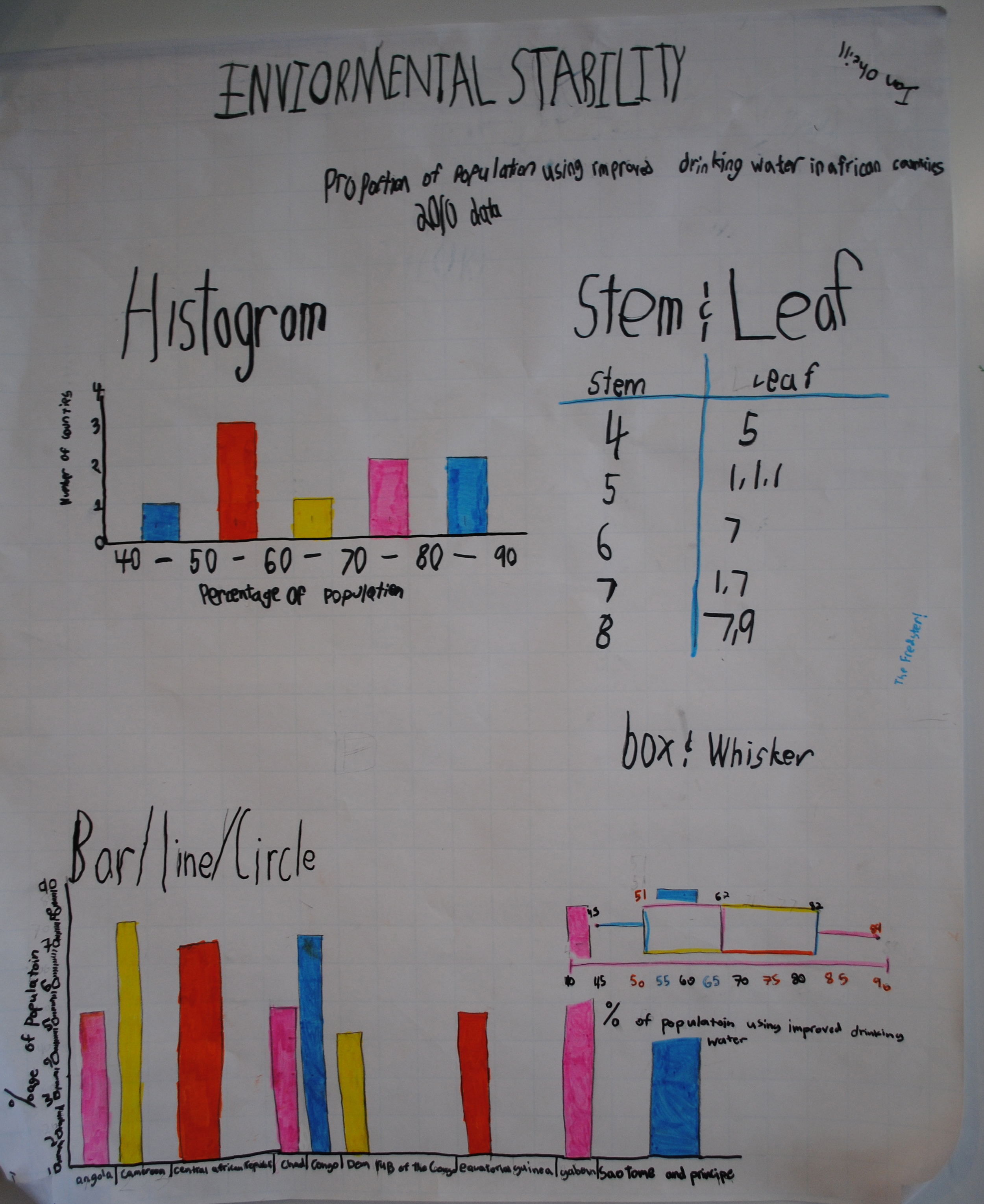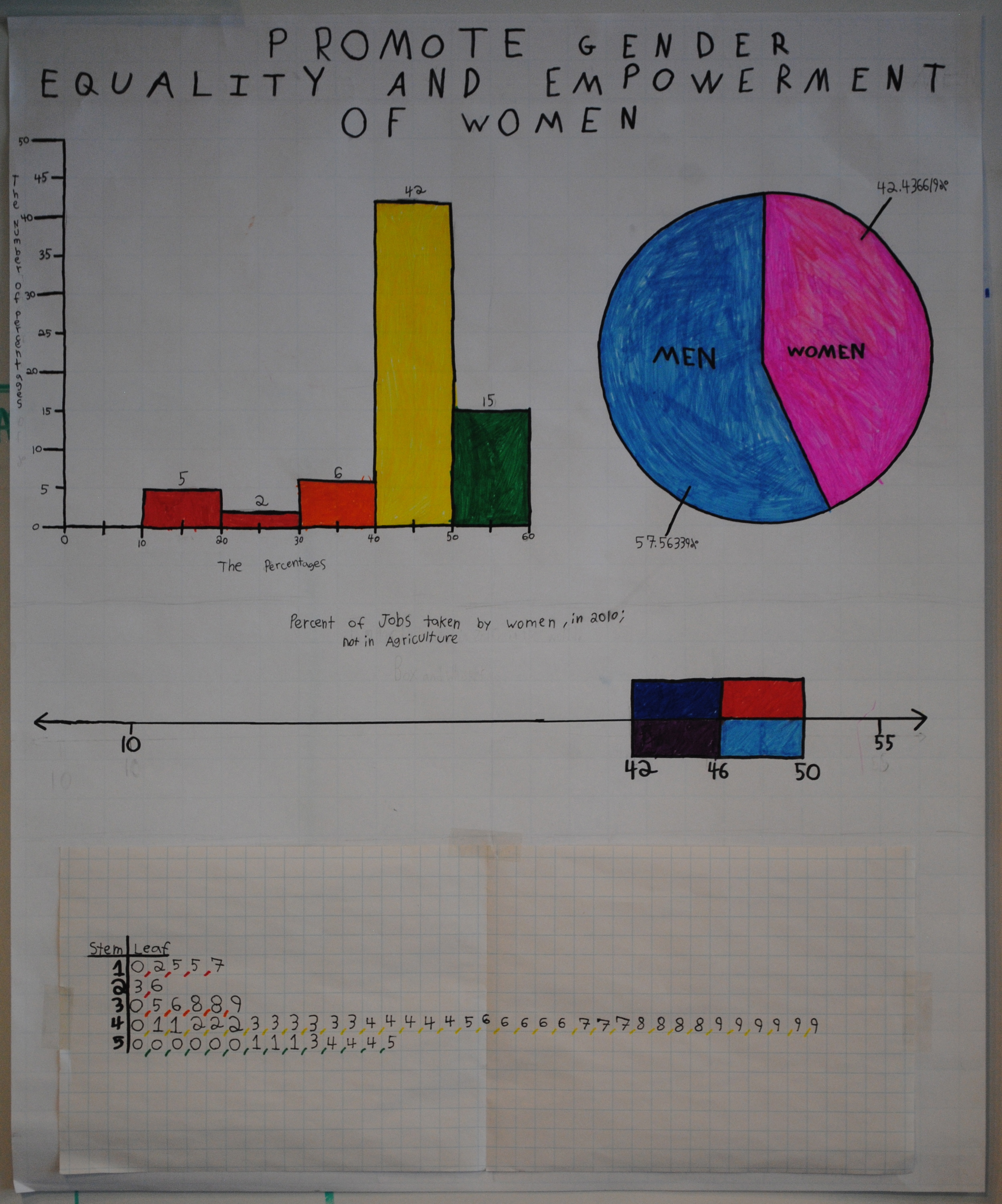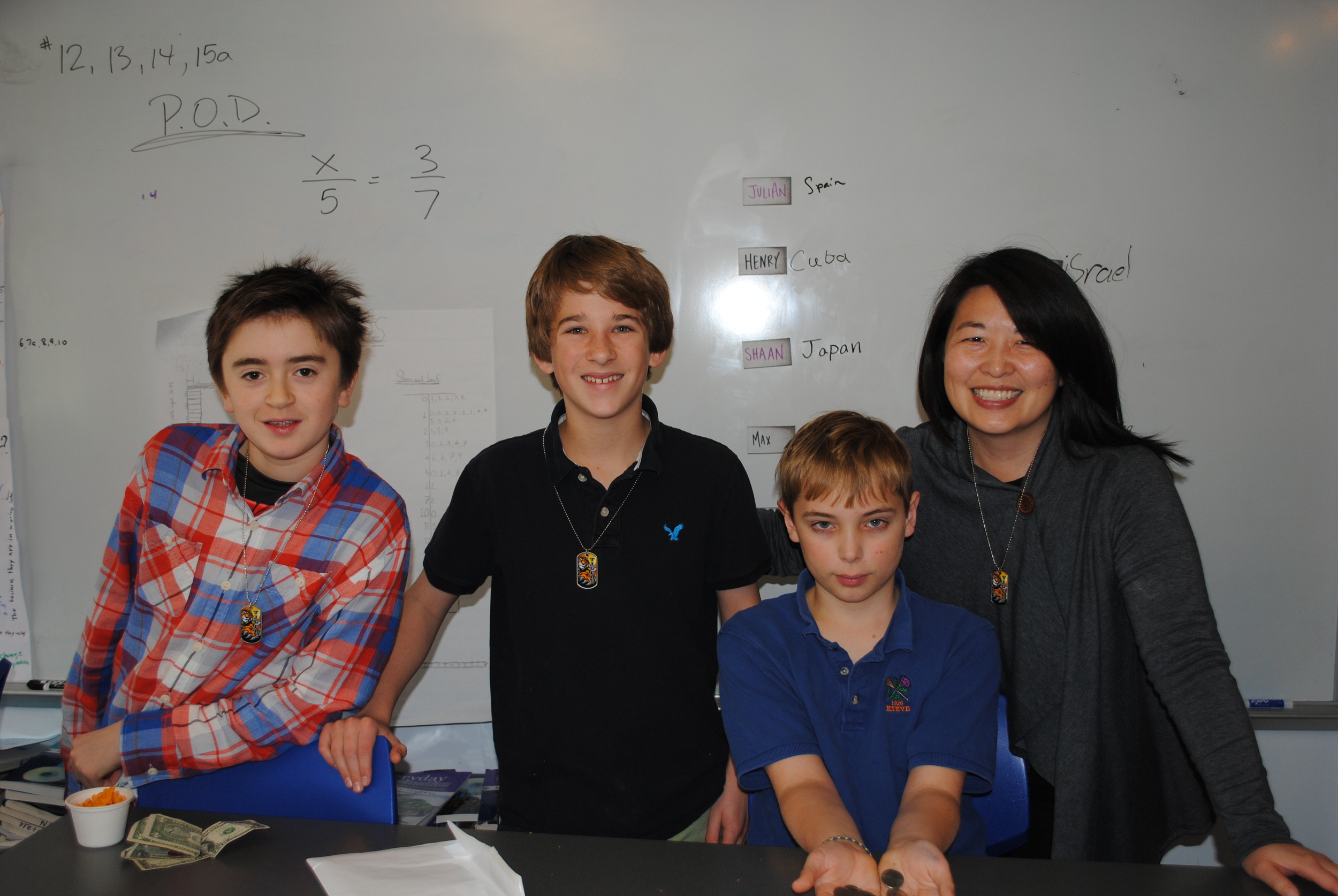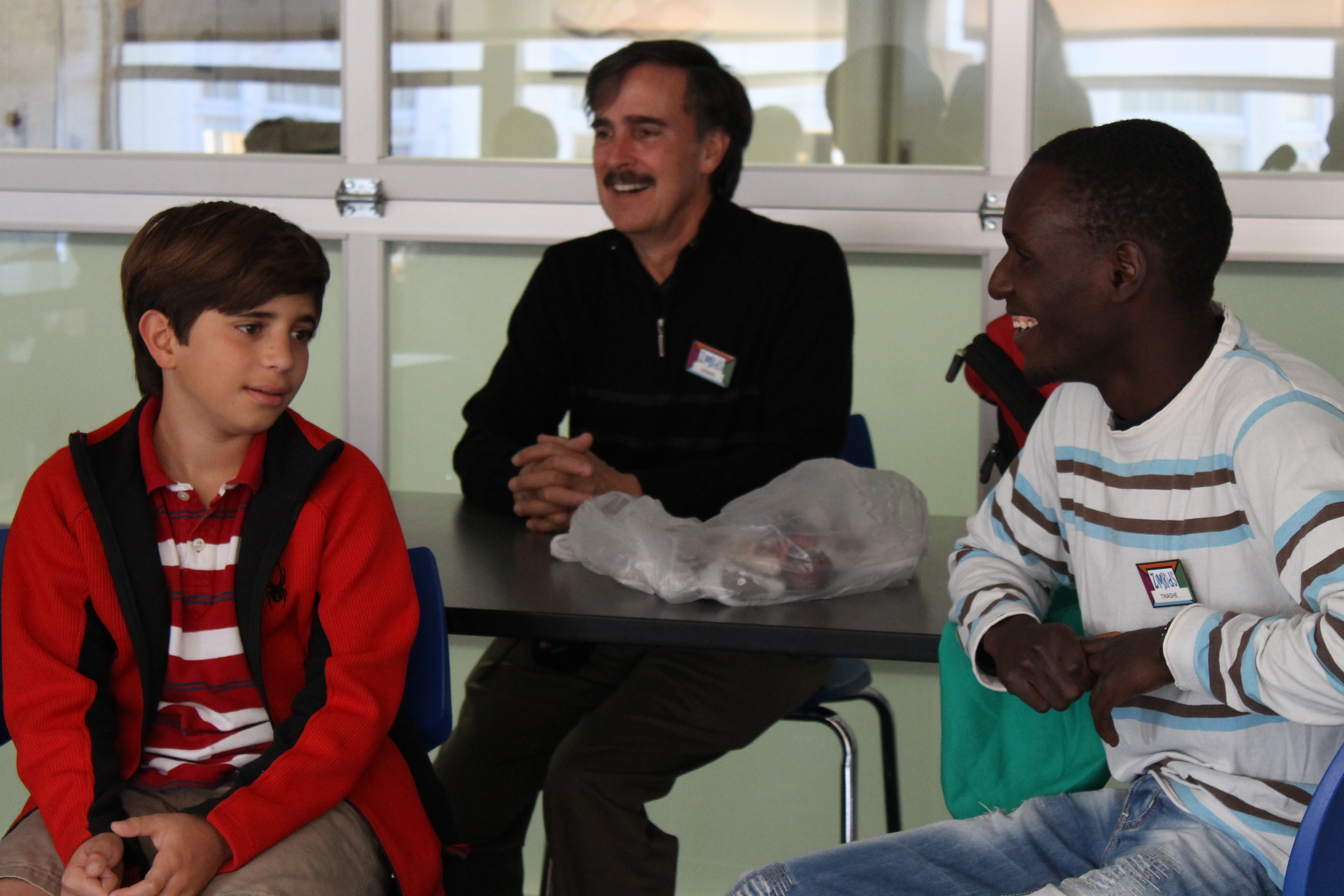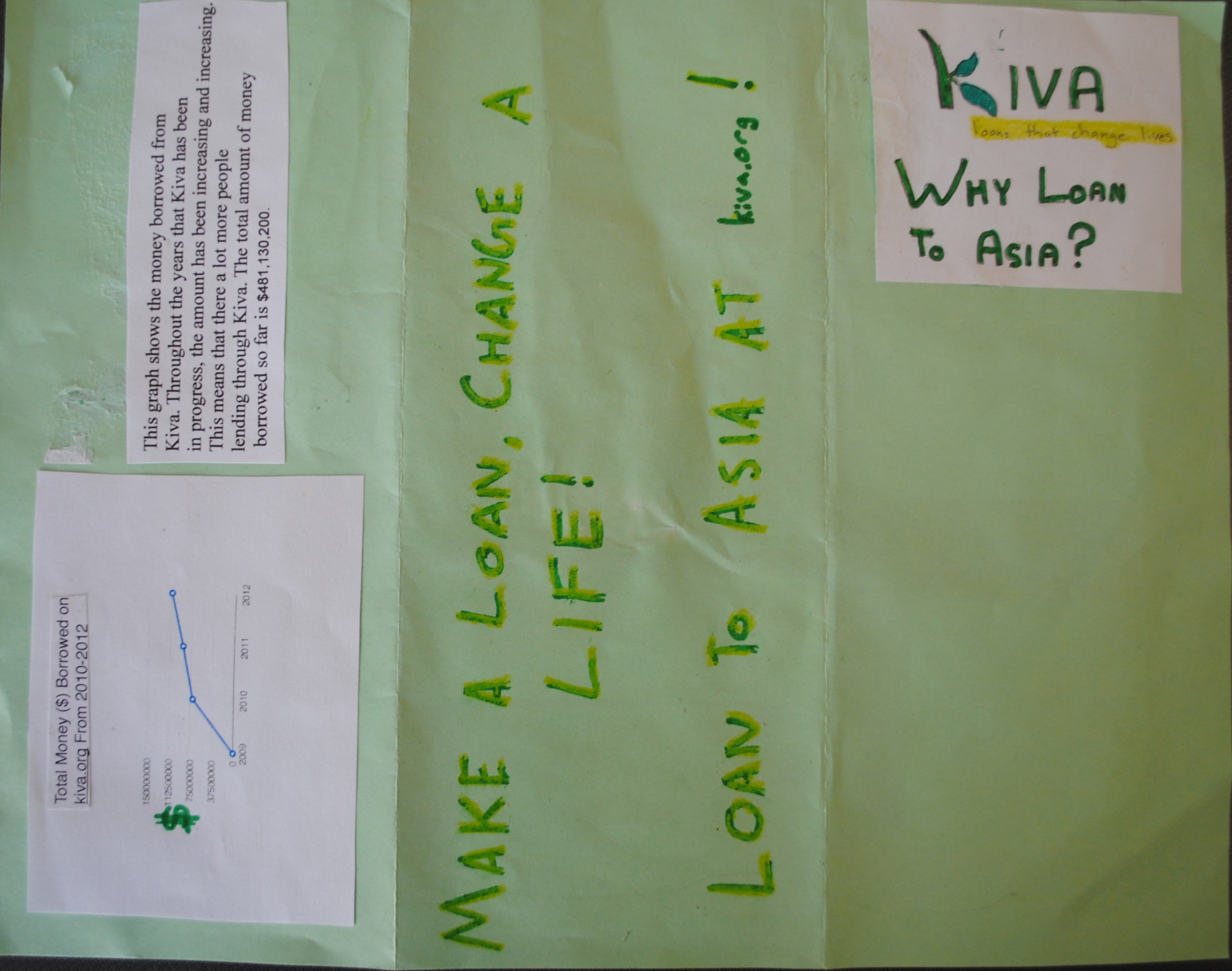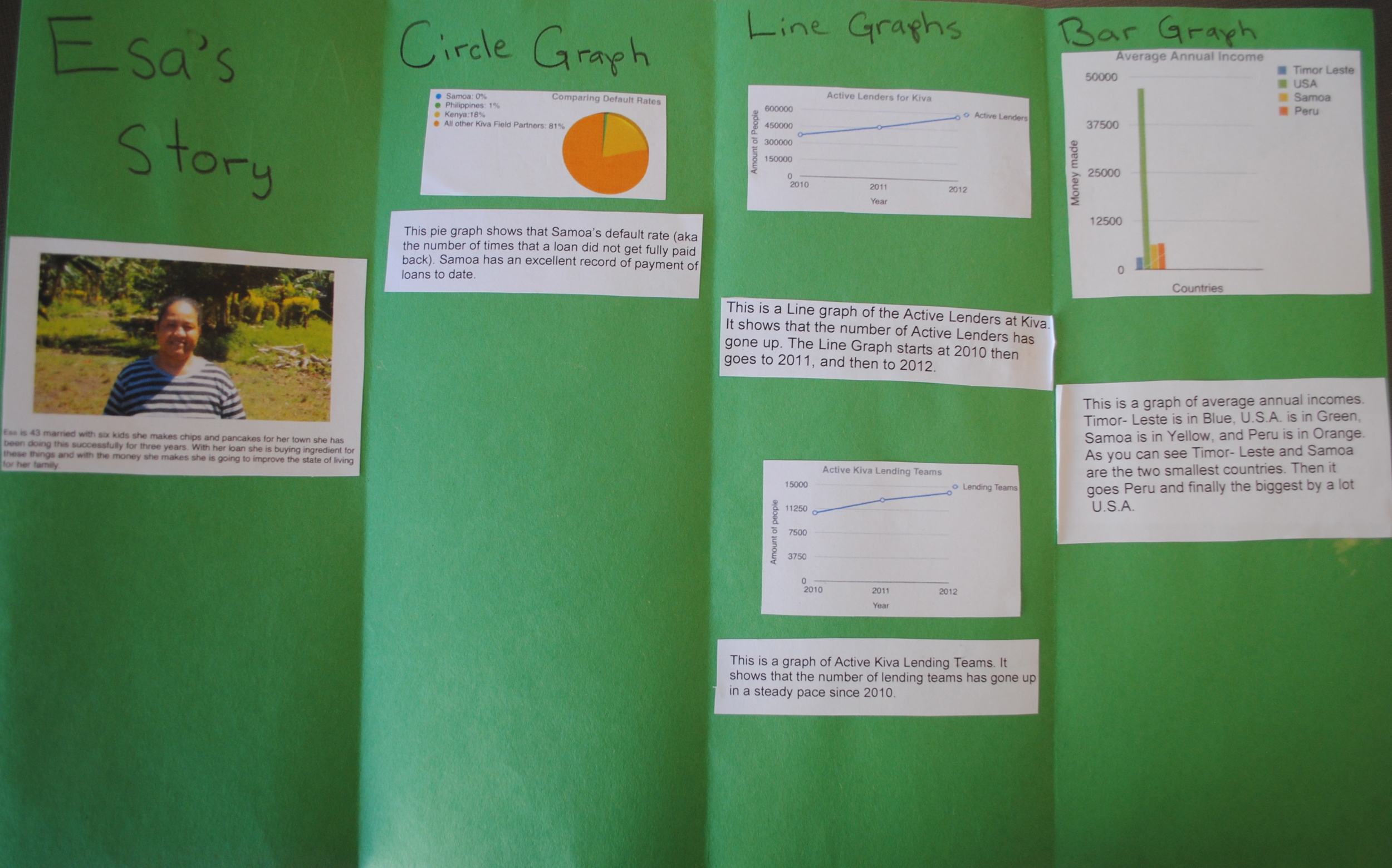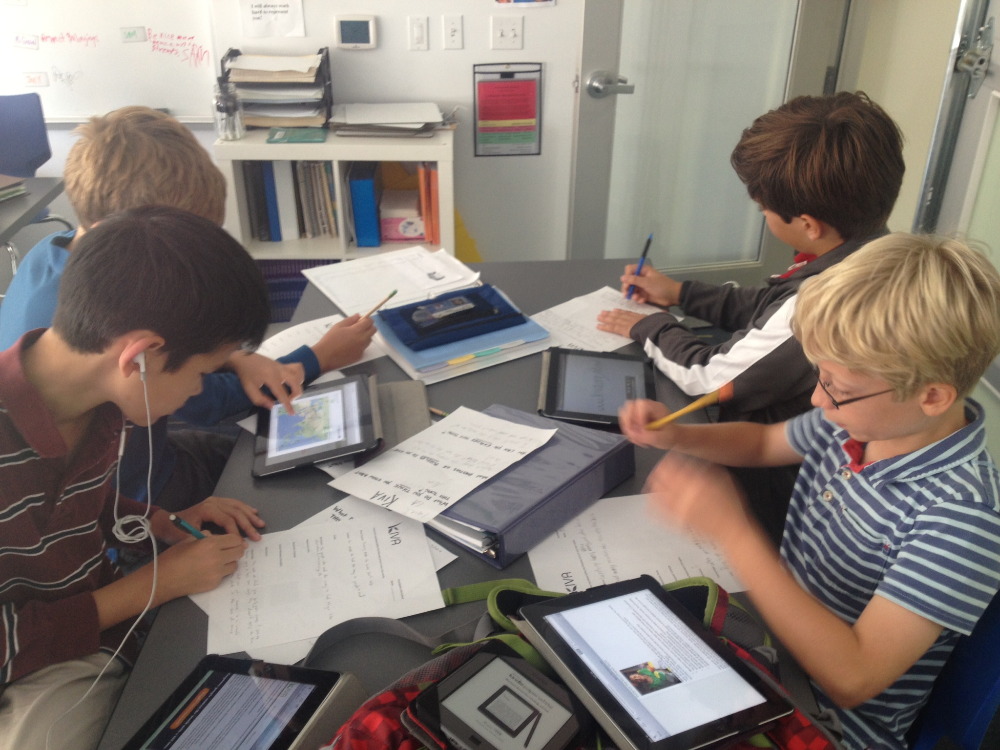Premal Shah visits Town School for his JUMBO check!
Teaching 5th and 6th grade for so long, I am no longer surprised when the 7th and 8th graders cruise through the hall without the intention of acknowledging me. The same boy that last year met me with a daily high five or (hush) a weekly one armed side hug, is now too busy or embarrassed to say "Good Morning Ms Goggin". So when I discovered the news that the 7th and 8th graders on the Kiva Council had decided that this year the school fair would benefit kiva.org I was over the moon. Take your daily high five, fist pump or "hollah". This was the kind of "hug" I wanted.
The school fair made over $6500 and we now have $500 in our Kiva Council account so that we can spread the love to lower school and allow each class to make a loan. It was really exciting to have Premal Shah come to accept our $6000 check that will benefit overhead costs for kiva.org. During his time, Premal introduced the boys to a math lesson related to the reality of kiva overhead funds: "If for everyone $1 donated to Kiva's overhead we are able to generate $10 that impacts borrowers, what impact will this $6000 have on the global community? If we were to make $25 loans with that "impact" number, how many could we make?" In addition, Premal told stories from the field in Sierra Leone and asked the boys what criteria they use when they make loans. When one of the boys noted that they like to lend to countries in turmoil, Premal acknowledged that many lenders don't feel the same and that it worries some. In the garage a few hours later, the 6th graders spoke from the heart:
"It's completely illogical not to consider loans to countries in turmoil. While we have to get the sense that they are trustworthy, we do know they may need it the most".
"It will empower them to find a good way out of this state turmoil, let's do it!"
"We aren't talking people in turmoil, we are talking people who are in countries that are in turmoil. Our loan could make even more of an impact"
"How can we convince others outside of our class to loan through kiva or donate to kiva?"
I ask the boys the same question Premal did when they make loans using this form, it helps to drive intentional lending which to me is an important part of our growth as global citizens. I want them not to just give for the sake of giving, but to learn how to make those decisions and to believe in them. This voice and choice is important and also makes lending on Kiva.org pretty fun.
Here are a few recent reflections from the loan process.
Pakistan Loan: One of the reasons I chose to loan to this person is because my mom is originally from Pakistan. In addition, we chose to loan to Shazia because she has three children, and her husband is the only person in the family that has a job. Finally, we chose Shazia because she was 95% funded, and the $25.00 that we gave her would make that 100%
Zip.kiva.org loan USA: The juice she is selling can make people healthier and it is a local company, and our group thinks that it's good to loan to local companies. Her juice company helps people who have "lyme disease, cancer, and other debilitating diseases, because they are too weak to cook their own food and supplement their bodies with the much needed vitamins, minerals, and antioxidants necessary for them to survive and beat these diseases."
Gaza, Palestine Loan: 1) he has six children that he needs to provide for 2) he is in a group that have been discriminated against (muslims) 3) he is starting a business instead of expanding. Which will make more business in general a the area he is working in.
How do we know that the lessons we are teaching these children through our global work is worthwhile? It's hard to quantify. I notice kinder hearts. I notice kids willing to go the extra distance because it matters. I notice kids making decisions that are less egocentric (which developmentally can be tough) and more about the greater good of our community whether it be Town School, San Francisco or the world. I have this gut feeling it's worth it. Try it, I bet you will too!
Our partnership with KIVA will continue to grow, I know. Did you hear that Kiva U was recently recognized for an international sustainability award and featured in Forbes after just 6 months. Cheers to that.















